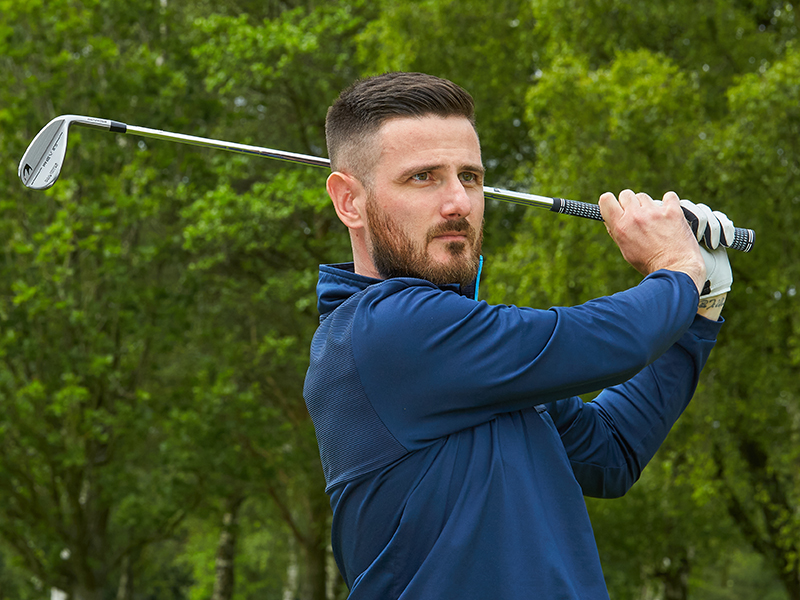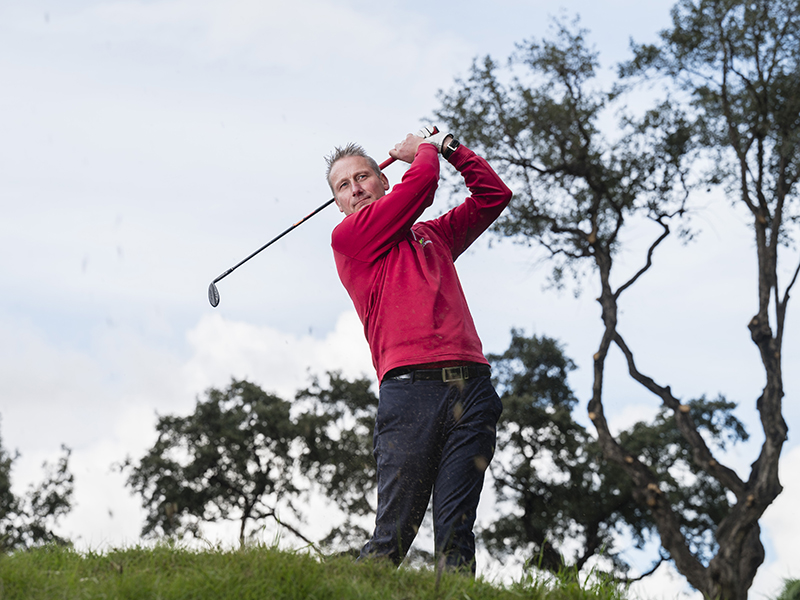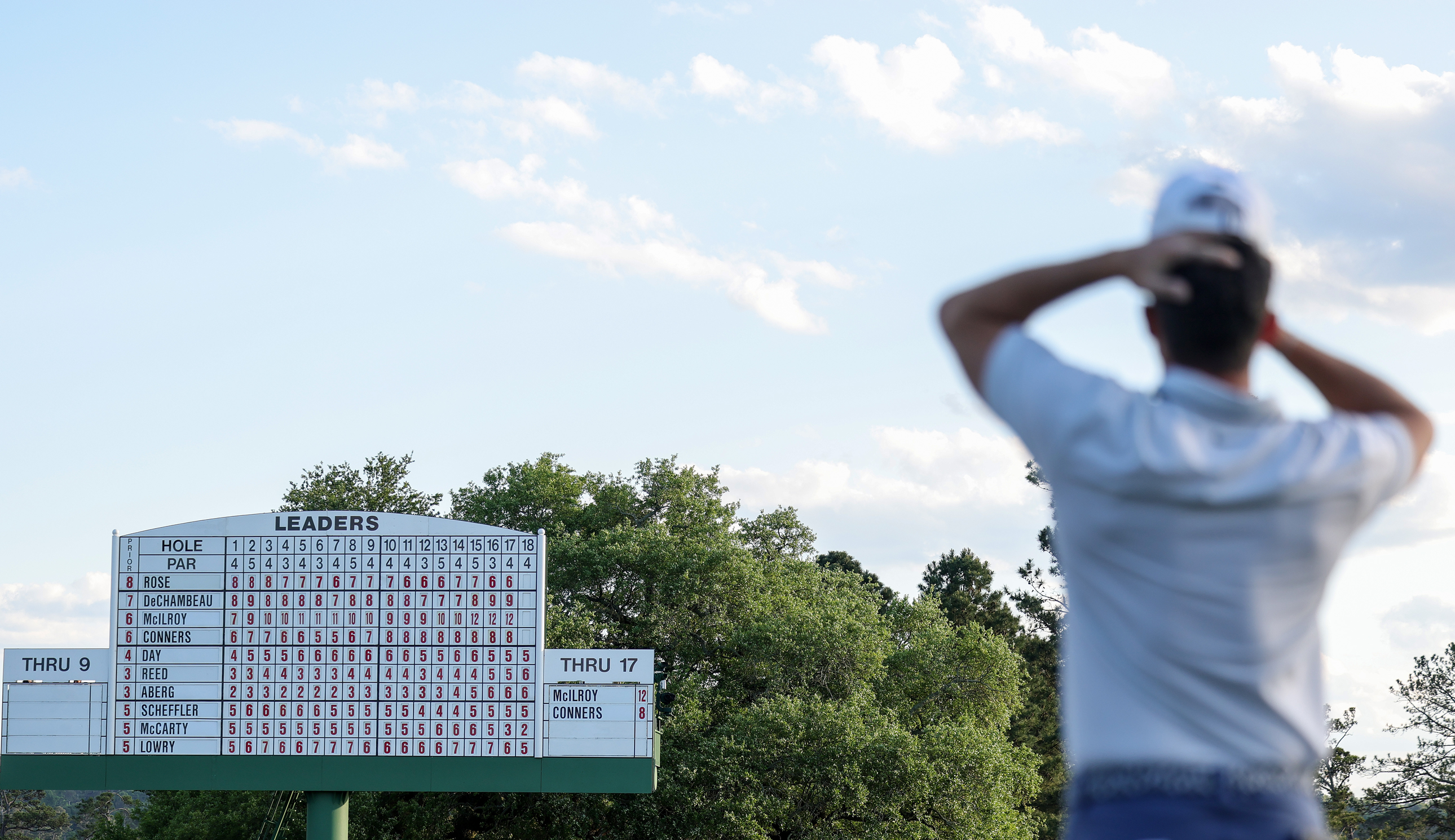This Driver Downswing Position Will Open The Floodgates To Effortlessly Powerful Tee Shots... But, Can You Master It?
The driver downswing is crucial for unleashing power, but so many amateur golfers allow common faults to creep in. Try this move for a welcome distance boost...


Anders Mankert
The driver downswing is essentially the vehicle which delivers your stored power through the golf ball at impact, and is a fundamental component for learning how to hit a driver.
Once you have nailed your driver setup and mastered the driver backswing with the big stick in hand, you now need to unleash the power and send the ball down the fairway, and these tips can help you do that.
Players of all abilities can benefit from a regular MOT, from new players searching for beginner golf tips or a long-standing club members wanting to reduce their handicap, and that's exactly what we have here for you.
In this article, PGA Master Professional and Golf Monthly Top 50 Coach Anders Mankert shares some expert tips from his illustrious teaching career and outlines a key position all amateurs should work on to unlock more power with a driver off the tee...

Anders Mankert is the owner and head professional at Leicester Golf Centre, with a coaching career spanning more than 28 years.
In 2024, Anders received the title of Master PGA Professional - becoming only the 65th person in history to be awarded that accolade. His vast coaching experience has transformed the golf swing of many amateurs and professionals, while also striving to grow the game through his revolutionary work at Leicester Golf Centre.
The Key Position For Unleashing Power With Driver
Whether you own the best driver on the market or you wield a trusty servant from years gone by, you will struggle to see the results you are after without a sound technique and understanding of one vital move.
The first step to initiate the driver downswing is to transfer your weight from the inside of your trail heel to the ball of your lead foot. This explosive movement helps to send all that stored power towards the target, allowing the rest of the swing to remain in sequence and follow the correct path towards the driver impact position.
Tennis Ball Drill
Get the Golf Monthly Newsletter
Subscribe to the Golf Monthly newsletter to stay up to date with all the latest tour news, equipment news, reviews, head-to-heads and buyer’s guides from our team of experienced experts.
This great tennis ball drill is super easy to set up and aims to improve your weight transfer in the golf swing. Take your normal stance and place one half under the ball of your lead foot. Put the other half under your trail heel, then make a few slow practice swings. Try to focus on the squashing the tennis ball under your trail heel in the backswing, then initiate the downswing by crushing the tennis ball under your lead foot.
When you feel confident, hit a few balls and slowly build up the speed. You can practice this at home without a club, so there really is no excuse to miss out on those extra yards on the golf course.
A post shared by Golf Monthly (@golfmonthly)
A photo posted by on
The Power Move
The arms go from being very wide in the backswing to very narrow in the downswing, with your trail elbow moving in towards the your rib cage

The swing begins to narrow, with the trail elbow moving towards the rib cage
This sets the club in a great position to allow you to turn and whip the club through the ball. You can see in the image below that my weight has already transferred over to my lead side, clearing my hips and leaving plenty of room for my hands to deliver the club.

The narrowing of the swing with driver has created a strong position to deliver the club to the ball at impact
Common Faults In The Driver Downswing
When trying to improve an area of the golf swing, it's important to correctly identify the problem first in order to source the appropriate antidote.
So many amateur golfers struggle to transfer their weight effectively, often staying over on their lead foot throughout most of the swing. This can be exasperated further by a reverse pivot, where a player moves their weight incorrectly onto their front foot in the backswing and their trail foot in the downswing.
Another issue in the downswing could be casting, where you release the power too early and miss out on that lovely, strong position that I outlined above. If either issue resonates with your own game, the tips above will certainly help you to move in the right direction.
What is the average driving distance for a male amateur golfer?
The answer to this question depends on a very important variable - your handicap. The two are closely linked, with a scratch golfer expected to hit the ball 61 yards further than a 25-handicapper on average (according to the latest Shot Scope data). The average driving distances are as follows:
Scratch - 248 yards
5-handicap - 225 yards
10-handicap - 218 yards
15-handicap - 202 yards
20-handicap - 189 yards
25-handicap - 187 yards
Does the average amateur golfer miss the fairway to the left or right more often with driver?
Missing the fairway to the right with driver is the most common, but only marginally. A 5-handicap golfer will miss to the right 24 percent of the time, while missing left 23 percent of the time. The gap widens slightly as you slide down the handicap scale, with a 25-handicapper missing right 28 percent of the time in comparison to 19% over to the left.

Barry joined Golf Monthly in January 2024, and now leads the instruction section across all platforms including print and digital. Working closely with Golf Monthly's Top 50 Coaches, he aims to curate and share useful tips on every aspect of the game - helping amateurs of all abilities to play better golf. A member at Sand Moor Golf Club in Leeds, he looks forward to getting out on the course at least once a week in the pursuit of a respectable handicap.
Barry is currently playing:
Driver: Benross Delta XT Driver
Hybrid: TaylorMade Stealth 4 Hybrid
Irons: Benross Delta XT 5-PW
Wedges: TaylorMade RAC 60, Callaway Jaws MD5 54
Putter: TaylorMade Spider Tour
- Anders MankertMaster PGA Professional and Golf Monthly Top 50 Coach
You must confirm your public display name before commenting
Please logout and then login again, you will then be prompted to enter your display name.
-
 Why The 16th Pin Has Been Moved From Its Traditional Spot For The Masters Final Round
Why The 16th Pin Has Been Moved From Its Traditional Spot For The Masters Final RoundThe 16th pin at Augusta National is in an different position that normal for the final round of The Masters, but why is that?
By Mike Hall Published
-
 Seve Ballesteros And Brooks Koepka Among The Big Names That Rory McIlroy Would Join As A Five-Time Major Winner With A Masters Victory
Seve Ballesteros And Brooks Koepka Among The Big Names That Rory McIlroy Would Join As A Five-Time Major Winner With A Masters VictoryRory McIlroy leads The Masters going in to the final round and, if he were to win, he would join an illustrious list of five-time Major winners
By Matt Cradock Published